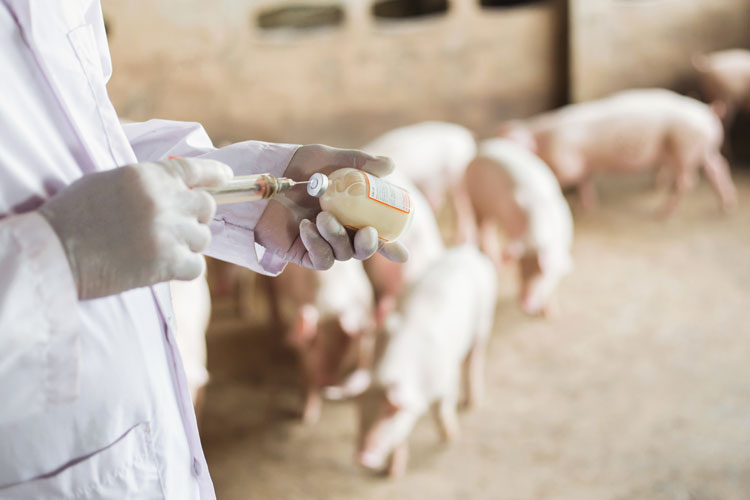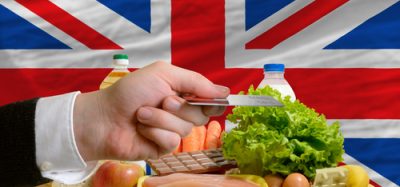New targets set to reduce antibiotics usage in UK farms
- Like
- Digg
- Del
- Tumblr
- VKontakte
- Buffer
- Love This
- Odnoklassniki
- Meneame
- Blogger
- Amazon
- Yahoo Mail
- Gmail
- AOL
- Newsvine
- HackerNews
- Evernote
- MySpace
- Mail.ru
- Viadeo
- Line
- Comments
- Yummly
- SMS
- Viber
- Telegram
- Subscribe
- Skype
- Facebook Messenger
- Kakao
- LiveJournal
- Yammer
- Edgar
- Fintel
- Mix
- Instapaper
- Copy Link
Posted: 20 November 2020 | Joshua Minchin (New Food) | No comments yet
With farms responding well to previously set targets, RUMA chair Cat McLaughlin says now is the right time to ‘reset’.


RUMA has set new targets for the use of antibiotics in farm animals.
New targets for the responsible use of antibiotics in UK farm animals over the next four years have been released this week, as part of European Antibiotic Awareness Day (18 November), by a task force of leading vets and farmers.
The new goals, facilitated by the Responsible Use of Medicines in Agriculture (RUMA) Alliance and set out in ‘Targets Task Force Report 2020’ build on what RUMA called a successful implementation of the last targets released in 2017. Overall, these have helped to halve sales of antibiotics to treat UK farm animals and achieve the fifth-lowest usage in Europe, with only Nordic countries lower.1
The report, launched alongside the Veterinary Medicine Directorate’s (VMD) release of antibiotic sales data for 2019, covers 10 sectors across aquaculture, pigs, poultry and ruminants. For the first time, calf rearing is examined in isolation in order to focus in on the specific health and welfare interventions that will reduce the need for antibiotic treatments.
With more than 75 percent of the original targets now achieved early or on track to be achieved by the December 2020 deadline, it is now time for some sectors to ‘reset’ with refreshed challenges for the next four years, said RUMA chair Cat McLaughlin.
“The UK farming industry has responded extremely well to the targets. Our original aim of lowering overall antibiotic use, and in particular, highest-priority critically important antibiotics (HP-CIAs), has been categorically achieved in the face of some challenging external conditions,” she noted. “Most sectors are now capturing data on antibiotic use across 90 percent or more of their sector, which has been a key part of the success.
“Even where usage data is lacking but good sales data are available, for example in cattle and sheep, sizable reductions have been achieved especially in sales of HP-CIAs.”
To compensate the areas where data is lacking, the 2024 targets include the collection of data into the new Agriculture and Horticulture Development Board Medicine Hub, a UK centralised database for ruminants.
Other sectors aiming to achieve reductions in antibiotic use as a result of farm-level interventions include the pig sector, with plans to decrease by a further 30 percent by 2024, and gamebirds with a goal to cut back by 40 percent, according to RUMA.
Among other activities, RUMA says the pig sector is promoting best-practice guidelines to reduce post-weaning diarrhoea, a common cause of antibiotic use, and will be identifying and supporting reductions among any farmers using higher levels of antibiotics within the sector. Gamebird farmers and vets will be focusing on improved practices, research into disease and farm assurance.
The poultry meat and trout sectors achieved significant reductions in recent years, and join laying hens and salmon in opting to hold their targets at current levels.
Preventative use has been phased out completely in these sectors, meaning many animals receive no antibiotic treatments at all in their lifetime, according to the taskforce.
References
- https://www.ema.europa.eu/en/documents/report/sales-veterinary-antimicrobial-agents-31-european-countries-2018-trends-2010-2018-tenth-esvac-report_en.pdf
Related topics
Food Safety, Health & Nutrition, Regulation & Legislation, Supply chain
Related organisations
Agriculture and Horticulture Development Board, Responsible Use of Medicines in Agriculture Alliance (RUMA), Veterinary Medicine Directorate







